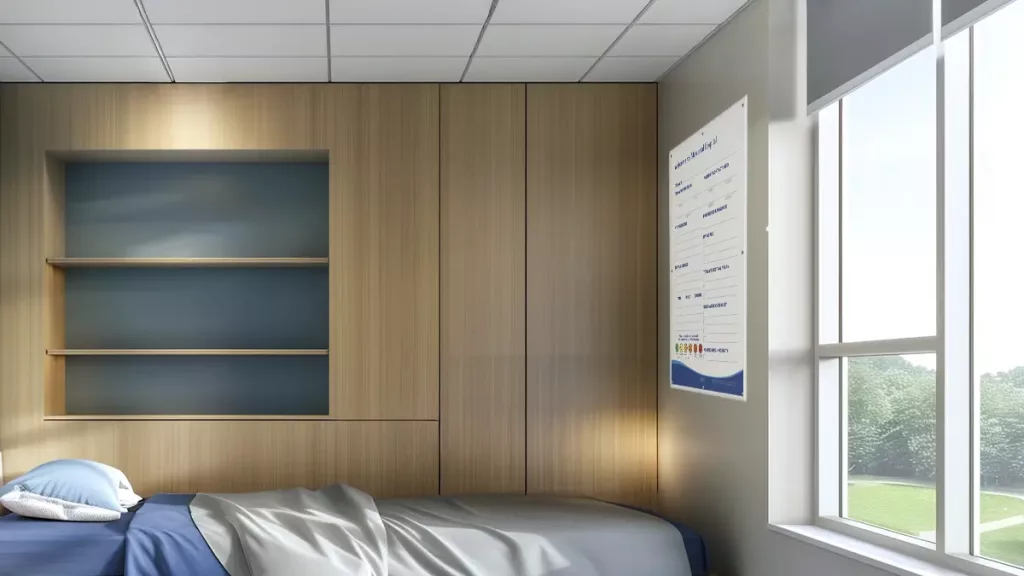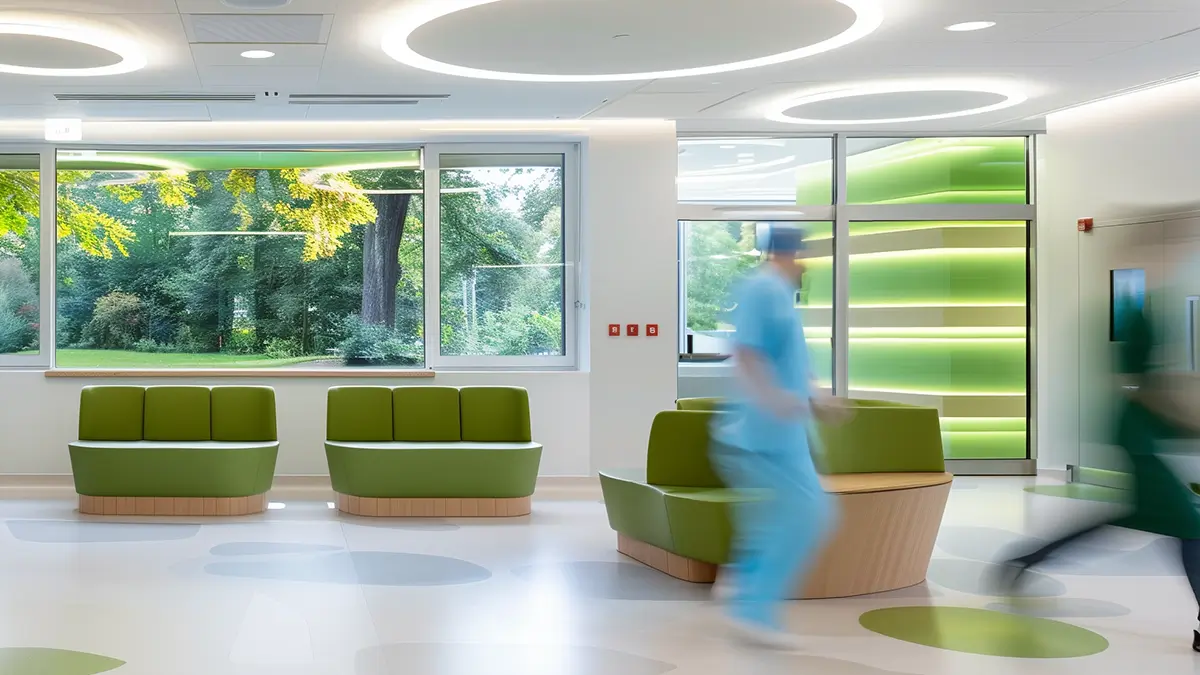Designing for Dignity: How Behavioral Health Design Fosters Healing
Imagine the stark contrast between the cold, sterile psychiatric institutions of the past and a modern therapeutic environment designed with evidence based design principles. One feels intimidating and clinical, while the other is bathed in natural light, filled with comfortable seating, and thoughtfully crafted to prioritize patient safety and promote mental health. While direct communication techniques remain vital for effective patient care, the physical environment is the silent partner in that conversation, either helping or hindering the healing process.
behavioral health design integrates environmental psychology and design principles to reduce patient anxiety and depression. We will focus on how thoughtful interior design can transform a facility and enhance the overall patient experience, particularly through the strategic use of patient boards that turn high-risk areas into spaces encouraging communication and supporting recovery.
Beyond Safety: Creating Therapeutic Environments that Heal
Modern behavioral health design goes beyond simply ensuring patient safety—it involves creating spaces that are inherently therapeutic and supportive of well being. By applying evidence based design principles rooted in environmental psychology, healthcare organizations can craft behavioral health environments that actively reduce stress and promote positive mental health outcomes.
Connecting to Nature for Psychosocial Well-being
Connecting patients to natural elements within healthcare settings plays a significant role in enhancing psychosocial well-being. Humans inherently seek a connection with nature, and fulfilling this need in behavioral health facilities can significantly reduce stress and improve overall feelings of well being (WBDG). This can be achieved by maximizing natural light, offering views of natural landscapes, incorporating indoor plants, and displaying nature-themed art. Such strategies contribute to a therapeutic environment that supports better patient outcomes and elevates healthcare quality.
Color Theory: Painting a Picture of Calm
Color is a powerful design principle that can subconsciously influence emotion and patient experience. While sterile, institutional white can feel isolating and cold, a thoughtful color palette can foster a sense of calm and security. Soft, cool colors like blues and greens promote tranquility, making them ideal for patient rooms and common areas within behavioral health settings. Warm, muted tones can create comfort in social spaces. Avoiding overly stimulating or jarring colors helps prevent agitation and supports mental health.
Flexible Spaces: Providing Choice and Control
Feelings of powerlessness are common triggers for anxiety in clinical settings. Behavioral health design counters this by offering patients choice and control over their environment. Flexible and unthreatening spaces, such as private nooks for quiet reflection and larger areas for social interaction, empower patients to regulate their sensory experience. Providing options aligns with patient centered care principles, enhancing patient safety and well being.
Lighting Strategy: Aligning with Circadian Rhythms
Our bodies’ circadian rhythms are closely linked to mental health. Disruptions can contribute to depression and sleep disturbances. Modern lighting systems designed with behavioral health design principles can mimic natural daylight progression, shifting color temperature and intensity throughout the day (Health Design). This supports healthier sleep patterns and overall well being, improving the therapeutic environment and patient experience.

The Patient Board as a Communication Hub
In behavioral health settings, traditional patient whiteboards often fall short as communication tools. When poorly designed or placed, they can cause frustration or confusion, detracting from patient safety and care. Reimagined as interactive therapeutic tools, patient boards become central to fostering communication and supporting recovery.
Using ligature-resistant, shatterproof materials with rounded edges ensures patient safety. Content focused on mental wellness—such as sections titled “About Me,” “My Strengths,” “Today’s Goal,” and “My Go-To Coping Strategy”—helps patients express identity beyond their diagnosis and actively participate in their care plan. Visual mood trackers offer low-pressure ways to communicate emotions, enhancing patient experience.
Placement is equally important. Patient boards should be located in visible yet semi-private areas where staff can engage patients in meaningful dialogue without exposure to chaotic, high-traffic corridors. This design principle respects patient dignity and improves the quality of therapeutic interactions.
Designing for De-escalation and Connection
Certain behavioral health spaces, including common rooms and seclusion areas, are higher risk for agitation. Thoughtful behavioral health design transforms these zones into calming environments that promote de-escalation and connection.
Common Areas and Day Rooms
Large, open common areas can overwhelm patients. Using zoning to create distinct activity areas—quiet zones for reading, social zones for conversation, and active zones for group therapy—allows patients to self-regulate sensory input. Incorporating sound-absorbing materials like acoustic panels and soft flooring reduces noise, a common trigger for anxiety, supporting mental health and patient safety.
Patient Rooms
Patient rooms should serve as sanctuaries within behavioral health facilities. Providing control over lighting and temperature enhances patient safety and well being. Maximizing natural light exposure through safety-grade windows is a proven strategy to combat depression and improve patient outcomes.
De-escalation Rooms
The traditional seclusion room is evolving into a therapeutic, calming space designed to support mental health rather than punish. Soothing colors, soft yet durable wall coverings, and digital projections of serene nature scenes create a sensory environment conducive to de-escalation. Communication remains central, with integrated boards or screens visible to care teams to display patient plans and goals, reinforcing that seclusion is a temporary, therapeutic intervention.

Design as a Therapeutic Partner in Behavioral Health
Effective behavioral health design is more than risk mitigation—it is a proactive therapeutic strategy that enhances healthcare quality and patient experience. By applying evidence based design principles, integrating natural elements, and transforming tools like patient boards into communication hubs, behavioral health environments become active partners in promoting mental health, patient safety, and well being.
When planning your next behavioral health design or renovation project, consider not only, “Is it safe?” but also, “Does this space actively foster healing and communication?” Implementing one strategy from this post—such as redesigning patient boards with VisiCare or optimizing color and lighting—can make a meaningful difference in patient care and outcomes.


